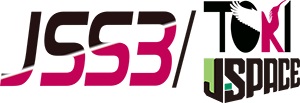Application of High-Fidelity Aerodynamic Analysis to Multidisciplinary Design Optimization for Reusable Space Transportation System
JAXA Supercomputer System Annual Report February 2022-January 2023
Report Number: R22EACA48
Subject Category: JSS Inter-University Research
- Responsible Representative: Takahiro Fujikawa, Junior Associate Professor, Faculty of Science and Technology, Tokyo University of Science
- Contact Information: Takahiro Fujikawa, Faculty of Science and Technology, Tokyo University of Science(fujikawa.takahiro@rs.tus.ac.jp)
- Members: Takahiro Fujikawa, Koichi Yonemoto, Shintaro Tejika, Tsuyoshi Ohtsuki, Ayaka Yamazaki, Hina Atarashi, Tomotaka Wstanabe, Yuto Nakayama
Abstract
Strong interactions between vehicle and trajectory during the design of winged reusable space transportation systems have motivated the application of multidisciplinary design optimization methodologies. However, low-fidelity aerodynamic analysis methods such as an engineering-level panel code have been used in our previous research, which poses the issues of accuracy.
In this study, the theoretical and practical applicability of FaSTAR, a CFD code developed by JAXA, to the system optimization of suborbital space planes will be investigated. Aerodynamic characteristics of the obtained design solutions will be evaluated in detail by using JAXA FaSTAR as well.
Reference URL
Please refer to https://space-systems.me.noda.tus.ac.jp/en/research-en/system-optimization/ .
Reasons and benefits of using JAXA Supercomputer System
High-performance computing environments such as supercomputers are essential in high-fidelity design optimization of space transportation systems, since aerodynamic characterization of a variety of vehicle shapes is required for the wide range of Mach numbers and angles of attack. JAXA FaSTAR and its related software are suited to the present study due to their computational efficiency and automation capability. These advantages can be gained more by using the JAXA supercomputer system, for which they are tuned.
Achievements of the Year
In the fiscal year 2022, multi-fidelity surrogate models were developed in order to realize accurate aerodynamic characterization with reduced computational cost, and they were incorporated into the multidisciplinary design optimization framework of manned suborbital space planes. The framework of efficient global optimization, where the surrogate models are updated by adding the training data during optimization, was implemented. Other achievements include 1) the aerodynamic shape representation and optimization using spline surfaces and 2) the aerodynamic characterization of suborbital space planes with supersonic airfoils optimized in the previous research.
As a system analysis of a suborbital space plane combined with an expendable upper stage, aerodynamic calculations during the separation flight were also performed.
Publications
– Peer-reviewed papers
1) Shintaro TEJIKA, Takahiro FUJIKAWA, and Koichi YONEMOTO, Multidisciplinary Design Optimization of Suborbital Spaceplane with Multi-Fidelity Aerodynamic Analysis, Proceedings of 2022 Asia-Pacific International Symposium on Aerospace Technology, 2022.
2) Ayaka YAMAZAKI, Takahiro FUJIKAWA, Koichi YONEMOTO, and Tomotaka WATANABE, Aerodynamic Shape Representation and Optimization of Suborbital Spaceplane Using Spline Surfaces, Proceedings of 2022 Asia-Pacific International Symposium on Aerospace Technology, 2022.
– Non peer-reviewed papers
1) Yuto NAKAYAMA, Takahiro FUJIKAWA, Koichi YONEMOTO, and Shintaro TEJIKA, Multidisciplinary Efficient Global Optimization of Suborbital Spaceplane Using Multi-Objective Evolutionary Computation and Surrogate Modeling, The Japan Society of Mechanical Engineers Kanto Branch 62nd Bachelor Research Conference, 2023 (in Japanese).
2) Tsuyoshi OTSUKI, Koichi YONEMOTO, and Takahiro FUJIKAWA, Aerodynamic Interference and Separation Analyses of a Two-Stage Spaceplane for Small Satellite Launch, Proceedings of 73rd International Astronautical Congress, 2022.
Usage of JSS
Computational Information
- Process Parallelization Methods: MPI
- Thread Parallelization Methods: Automatic Parallelization
- Number of Processes: 120 – 160
- Elapsed Time per Case: 1 Hour(s)
JSS3 Resources Used
Fraction of Usage in Total Resources*1(%): 0.10
Details
Please refer to System Configuration of JSS3 for the system configuration and major specifications of JSS3.
| System Name | CPU Resources Used(Core x Hours) | Fraction of Usage*2(%) |
|---|---|---|
| TOKI-SORA | 2506971.45 | 0.11 |
| TOKI-ST | 1494.74 | 0.00 |
| TOKI-GP | 0.00 | 0.00 |
| TOKI-XM | 5118.58 | 3.20 |
| TOKI-LM | 523.71 | 0.04 |
| TOKI-TST | 0.00 | 0.00 |
| TOKI-TGP | 0.00 | 0.00 |
| TOKI-TLM | 0.00 | 0.00 |
| File System Name | Storage Assigned(GiB) | Fraction of Usage*2(%) |
|---|---|---|
| /home | 65.00 | 0.06 |
| /data and /data2 | 550.00 | 0.00 |
| /ssd | 650.00 | 0.09 |
| Archiver Name | Storage Used(TiB) | Fraction of Usage*2(%) |
|---|---|---|
| J-SPACE | 0.00 | 0.00 |
*1: Fraction of Usage in Total Resources: Weighted average of three resource types (Computing, File System, and Archiver).
*2: Fraction of Usage:Percentage of usage relative to each resource used in one year.
ISV Software Licenses Used
| ISV Software Licenses Used(Hours) | Fraction of Usage*2(%) | |
|---|---|---|
| ISV Software Licenses(Total) | 0.95 | 0.00 |
*2: Fraction of Usage:Percentage of usage relative to each resource used in one year.
JAXA Supercomputer System Annual Report February 2022-January 2023


